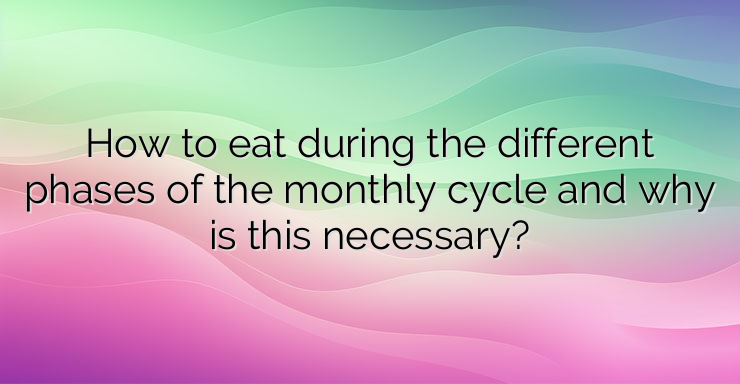The menstrual cycle in a woman of reproductive age is generally a period of 28 days, which are divided into four different phases. During this month, a woman’s nutritional needs change due to hormone regulation. Synchronizing the cycle with nutrition is a way for the body to adapt to changes, to achieve a better balance in everyday life, reduce the effects of PMS and menstrual cycle symptoms. The first phase is the menstrual phase (day 0 to 7). This phase starts from the first day of menstrual bleeding to the last. In this phase, the thickened lining of the uterus sheds and causes bleeding. In this phase, estrogen and progesterone levels are at their lowest, this is associated with a lack of energy. Iron-rich foods can replace iron lost from bleeding. Examples include green leafy vegetables, lean red meat, lentils and beans. Vitamin C increases the absorption of iron. Citrus fruits, berries, broccoli and red peppers are good sources of vitamin C. Vitamin K can reduce heavy bleeding. Foods rich in this vitamin are: blueberries, cheese and eggs. Omega-3 fatty acids reduce inflammation and spasms. Foods that contain omega-3 fatty acids include salmon, flaxseeds, and nuts. The second phase is the follicular phase (day 8 to 13). During this phase, the pituitary gland produces follicle-stimulating and luteinizing hormone to stimulate the ovaries to produce new follicles. Estrogen levels also rise to prepare for the release of the follicle. Magnesium levels are often lowest in the follicular phase, so eating foods high in this vitamin can help prevent menstrual cramps later in the cycle. Also, because estrogen levels are so high, foods that can reduce the effects of estrogen can be helpful in reducing heavy bleeding and PMS symptoms. It is appropriate in this phase to consume flax seeds, garlic, dried fruits and sesame seeds. So are vegetables like broccoli, cauliflower, cabbage and kale, as well as healthy fats like avocados and pumpkin seeds. The third phase is ovulation (day 14 to 15). This phase involves the release of the egg from the ovary into the fallopian tube. This is the only time in the menstrual cycle when pregnancy can occur. Estrogen levels peak during this phase. Eating foods high in fiber can help reduce estrogen levels, which can be important for avoiding estrogen dominance in the body, a common hormonal imbalance. Foods suitable for this phase are: fatty fish such as salmon and tuna, lamb, sesame seeds, red lentils, berries, spinach, tomatoes, eggplant and Brussels sprouts. The fourth phase is the luteal phase (day 16 to 28). In this phase, the egg transforms into a corpus luteum, which begins to produce progesterone as well as estrogen. If pregnancy does not occur,phase is usually associated with premenstrual symptoms. Symptoms may include mood changes, skin inflammation, headache, breast tenderness, and bloating. Eating foods high in magnesium at this time can help ease painful symptoms. Magnesium is also thought to support energy levels and libido during this phase. Healthy fats and protein also help maintain muscle and strength as the body prepares for bleeding. The inclusion of complex carbohydrates, root vegetables, leafy greens, is also recommended. Sources: https://health.clevelandclinic.org/nutrition-and-exercise-throughout-your-menstrual-cycle https://health.clevelandclinic.org/what-should-you-eat-when-youre-on-your -period/ https://londonclinicofnutrition.co.uk/nutrition-articles/foods-to-eat-for-each-stage-of-your-menstrual-cycle/ https://www.bannerhealth.com/healthcareblog/teach -me/cycle-syncing-and-getting-in-tune-with-your-menstrual-cycle


Leave a Reply